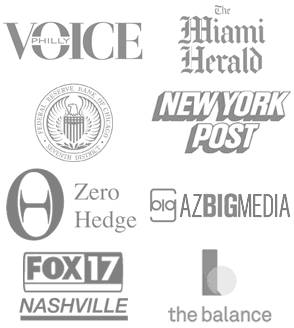For many aspiring homeowners and real estate investors, the idea of qualifying for a mortgage loan without providing tax returns seems far-fetched. After all, traditional lenders heavily rely on tax documentation to verify income, assess repayment ability, and meet regulatory standards. But in 2025, with more flexible lending options available, getting a mortgage loan without tax returns is not only possible—it’s becoming more common.
Can I Get a Mortgage Loan Without Tax Returns?
Whether you’re self-employed, a gig worker, a small business owner, or a real estate investor with write-offs that reduce your reported income, you have multiple mortgage options with competitive rates and terms.
The RefiGuide helps consumers explore how to secure a no-doc mortgage loan, the alternatives lenders offer, what qualifications are typically required, and two real-world case studies that show how borrowers successfully financed homes without traditional income documentation.
-
Mortgage loan without tax returns
-
No-doc mortgage options
-
Bank statement loans
-
No income documentation mortgage
-
DSCR loan for investment properties
-
Stated income loan
Why Are Tax Returns Normally Required with Mortgage Approvals?
Lenders use tax returns to verify income stability and ensure borrowers meet debt-to-income (DTI) ratios. They also confirm employment history and look for red flags, like declining income or high business losses. Tax returns—often the last two years—are a standard part of the underwriting process for conventional loans, FHA loans, and most other government-backed options.
But what if your tax returns don’t reflect your real earning power? What if deductions and business expenses drastically reduce your adjusted gross income (AGI), making you appear less qualified on paper than you actually are?
That’s where alternative documentation mortgage loans come into play.
Mortgage Loan Options That Don’t Require Tax Returns
Let’s explore four main alternatives for getting a mortgage without tax returns in 2025:
1. Bank Statement Mortgage Loans
Bank statement loans are ideal for self-employed borrowers or business owners who earn good income but show limited taxable income on paper. Instead of tax returns, lenders review 12 to 24 months of business or personal bank statements to calculate average monthly deposits. This provides a realistic snapshot of actual income.
Pros:
-
No tax returns needed
-
Reflects true cash flow
-
Great for freelancers and gig workers
Cons:
-
Higher interest rates than conventional loans
-
Larger down payments typically required (10–20%)
Key notes: bank statement mortgage loan, no income documentation mortgage
2. No-Doc Loans
These are true no-doc mortgage loans, meaning lenders do not verify income or employment. Instead, approval is based on your credit score, down payment, and asset reserves. Most no-doc mortgage lenders in 2025 are offering private money loans and portfolio lending programs.
Pros:
-
Fast approval
-
Minimal paperwork
-
Helpful for high-net-worth individuals
Cons:
-
High interest rates and fees
-
Often limited to investment properties or second homes
3. Stated Income Loans
In a stated income mortgage, borrowers declare their income without submitting documentation to verify it. These loans are also called “liar loans,” a term stemming from the 2008 housing crash—but in 2025, they’re more regulated and based on logical income estimates.
Pros:
-
Easier qualification
-
Useful for professionals with inconsistent income
Cons:
-
Requires high credit and significant equity
-
Offered only by niche lender
4. DSCR Loans
This DSCR loan program is for real estate investors who want to qualify based on rental property income instead of personal income. Lenders look at the property’s ability to pay for itself. No tax returns or personal income verification are required. Also consider the DSCR HELOC loan.
Pros:
-
No personal income documentation
-
Focuses on investment property’s cash flow
-
Ideal for LLCs or corporations
Cons:
-
Not available for primary residences
-
DSCR usually needs to be 1.0 or higher
SEO Keywords: DSCR loan, no-doc investment property loan
Who Qualifies for a Mortgage Without Tax Returns?
To get approved for one of these loan types, lenders will evaluate:
-
Credit score: Most lenders require a minimum of 620–680 for alternative documentation loans.
-
Down payment: Expect to put down 10%–30% depending on the loan type.
-
Reserves: Cash reserves of 3–12 months of mortgage payments are commonly required.
-
Property type: Many of these programs work best for investment properties or second homes.
-
Loan-to-value (LTV): Lower LTVs improve approval odds; 70%–80% is typical.
Case Study #1: Self-Employed Graphic Designer Uses Bank Statement Loan
Background:
Emily is a self-employed graphic designer who earns over $120,000 a year. However, her tax returns show only $45,000 in taxable income after deductions for business expenses. A conventional lender denied her due to a high DTI ratio.
Solution:
Emily applied for a bank statement mortgage loan with a private lender. She submitted 12 months of personal bank statements showing consistent deposits of $10,000/month. The lender calculated her qualifying income at $8,000/month after applying an expense factor.
She was approved for a $450,000 loan with a 10% down payment and a 7.25% interest rate—slightly higher than a conventional loan, but well worth it to buy her dream home.
Result:
Emily closed within 30 days and avoided the hassle of trying to justify every tax write-off. “It was a relief not having to explain why my tax returns didn’t show the full picture,” she said.
Case Study #2: Real Estate Investor Uses DSCR Loan for Rental Property
Background:
Carlos, an experienced real estate investor, wanted to purchase a fourplex in Florida. He didn’t want to use his personal tax returns to qualify, especially since he had just acquired another property and didn’t want to affect his DTI ratio.
Solution:
Carlos applied for a DSCR loan. The lender reviewed the projected rental income of the fourplex, which was $6,400/month. The total mortgage payment would be $5,200, resulting in a DSCR of 1.23—well above the 1.0 threshold.
Result:
Carlos was approved without submitting tax returns, W-2s, or employment documentation. He secured a 30-year fixed loan at 8.15% with 25% down. “The DSCR loan made it easy to keep building my portfolio without jumping through tax paperwork hoops,” he said.
Pros and Cons of Getting a Mortgage Without Tax Returns
✅ Pros:
-
Accessible to self-employed and freelance workers
-
Faster approvals with less paperwork
-
Keeps personal finances private
-
Great for investors and LLCs
-
Reflects real cash flow, not reduced taxable income
❌ Cons:
-
Higher interest rates than traditional loans
-
Larger down payments often required
-
Not eligible for government-backed loan programs
-
Fewer lenders offer these products
-
Some loan types (like no-doc) are only for non-owner-occupied properties
Is a Mortgage Loan with No Tax Returns Right for You?
Let’s be honest: the mortgage system isn’t always built for modern workers. Entrepreneurs, freelancers, and investors often don’t fit the conventional mold. But just because your income isn’t shown on a tax return doesn’t mean you shouldn’t be able to buy a home.
Why should your ability to get a mortgage depend on a number buried in Line 7 of a form few people understand?
If you’ve got the cash flow, assets, and credit to support a mortgage, a no-doc mortgage in 2025 could be your gateway to homeownership or portfolio growth. From bank statement loans to DSCR mortgages, there are more flexible options than ever before. You just need to know where to look.

